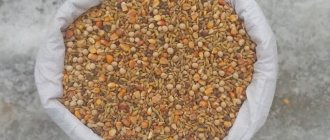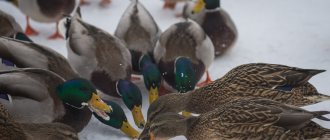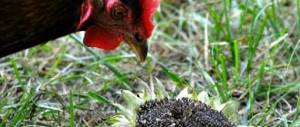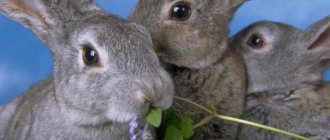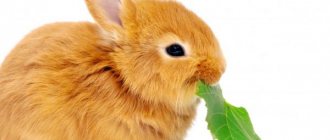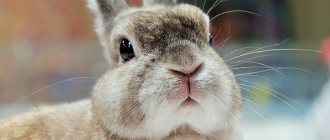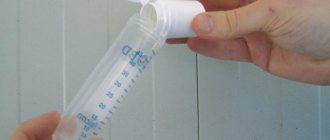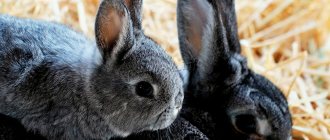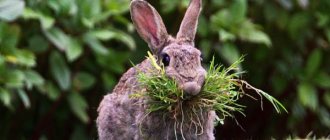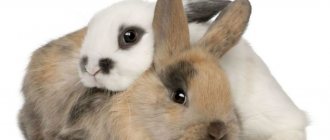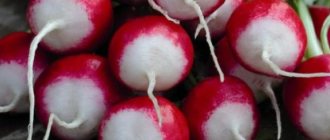Anyone who has ever experienced raising rabbits knows exactly how much these cute little ears love to eat. We can say that these animals eat almost constantly. Physiologically, this is how their digestive system works - they need to push through each portion of food they eat into the next. But it is worth remembering that not all food is healthy, especially in large quantities.
But hay for rabbits is precisely that ingredient in their daily diet that is not only natural food, but also a storehouse of useful substances. There is no risk of overeating such food.
Which hay is best for rabbits
When choosing roughage, take into account the taste preferences of rabbits in the wild. An excellent option is considered to be a preparation made from herbs that have been dried naturally. It is rich in vitamins, minerals, valuable amino acids, which are very necessary for the fast-growing organism of rabbits.
| Plants recommended for drying and feeding rabbits | |||
| Nettle | Plantain | ||
| Sagebrush | Shepherd's Purse | ||
| Tansy | Sorrel | ||
| Yarrow | Clover | ||
| Alfalfa | Dandelion | ||
| Burdock | Sylphia | ||
| Vika | Peas | ||
| Sainfoin | Lupine | ||
| Sida | Sow thistle | ||
| Wheatgrass | Snooze | ||
Recommendations:
- Stinging nettle is an excellent food and preventative. To preserve all its beneficial substances as much as possible, this plant is harvested in late spring, before flowering.
- Wormwood and tansy are excellent prevention of helminths, so they must be included in the composition of hay when preparing it.
- If there is an extra plot of land, then it can be sown, for example, with peas, vetch, sainfoin. Rabbits will be happy to chew such food during the cold season. But we must not forget that these plants cause flatulence. To prevent this from happening, dried beans are fed mixed with other types of harvested herbs.
- It is useful for nursing females to give dried rhubarb and legumes mixed with wheatgrass. Such food increases the nutritional value and volume of milk.
How much hay does a rabbit need?
Rabbits require constant access to hay barns (feeders). When calculating future needs, a number of aspects are taken into account:
- rabbit breed;
- climatic features of the region where eared animals are grown;
- quality and nutritional value of hay;
- physiological characteristics (young animals, adults, pregnant or lactating females);
- purpose of breeding (fattening, decorative use).
An adult rabbit eats about 300 g of hay per day, a baby rabbit up to 4-5 months - 100-200 g, pregnant and lactating females - 350-450 g. For the season, one adult rabbit needs from 40 to 100 kg of hay, a baby up to 4 months - approximately 10-15 kg.
In practice, it can be very difficult to take into account all the nuances. Rabbit breeders believe that a rabbit can eat an armful of hay the size of itself in a day. This weight of food eaten per day is multiplied by the number of days when feeding is expected and by the number of animals. Approximately another 5% is added to the result as a reserve. In this way, hay requirements for a certain period are calculated.
All calculations are approximate, because it is difficult to accurately predict the duration of cold days, the appetites of long-eared gourmets, and their preferences. Therefore, experienced farmers recommend stocking up on dried plants in excess.
Feed value of hay
It is not easy to calculate the feed value of hay, because it depends not only on the type of grass, but also on the area where the dried products were harvested. Therefore, on average, 0.37-0.53 feed units per 1 kg are considered.
The Importance of Hay for Rabbits
Hay is classified as roughage. But its nutritional characteristics make it an indispensable basis for the long-eared diet.
| Properties of hay |
| • Contains many essential vitamins and microelements |
| • Large volumes of plant fiber in the composition contribute to normal digestion of the rabbit |
| • Adjusts peristalsis in the gastrointestinal tract |
| • Helps to grind down the teeth that rabbits grow throughout their lives. |
| • Prevents the appearance of spurs in the animal’s mouth |
| • Hay aroma perfectly stimulates appetite |
| • Chewing and playing with hay allows the animal to release excess energy and not get bored |
What kind of hay is prohibited to give?
Despite all the positive aspects of feeding rabbits with hay, it is necessary to take into account some limitations:
- Never collect grass near highways, industrial enterprises, or in swamps, where there are a lot of slugs (they carry helminths).
- Do not allow poisonous plants to get into the harvest.
| Avoid: |
| • celandine • hemlock • buttercups • hellebore • colchicum • hemlock • foxglove • marigold • larkspur • lumbago • datura • spurge • henbane • lily of the valley • raven's eye • blackberry • vermouth |
When dried, the content of toxins in them is significantly reduced, they are no longer so dangerous. But it's always better to be safe than sorry.
- Feed rabbits with dried clover, alfalfa, and legumes with caution. They contain a lot of calcium, which negatively affects the functioning of the genitourinary system. If animals are more than 6 months old, then it is generally recommended to exclude such food from the diet.
| Calcium levels in herbs: |
| • Alfalfa hay: 1.80% • Clover: 1.5% • Wheat: 1.15% • Timothy grass: 0.66% • Hedgehog grass: 0.58% • Oats: 0.2% • Grass: 0-0.2% |
- If dried raw materials become damp, frozen, or moldy, they are disposed of. It is prohibited to feed such products.
- You should not feed your animals old supplies that have been stored for more than a year, even if they look good. The beneficial properties of such products are reduced to zero!
Norms and feeding regimes
Adult rabbits need to be fed at least 2 times, and even better 3 times a day. But the younger the livestock, the more often they should receive food. The maximum number of feedings is 4 times a day; more often only weanlings are given food. It’s easier to feed rabbits not by hand, but to put up special bunker feeders and hay barns, pour food into them, and the animals themselves will take from them how much and when they need it.
Rabbits can eat often, almost constantly, but better results can be achieved if they are fed according to a schedule. For example, experienced rabbit breeders use such schemes.
| Winter 3 times feeding: | Winter 4 times feeding: |
| 8 hours – half the daily volume of concentrates and hay; 12 hours – succulent food; 17:00 – second half of hay, branches and grain. | 6 hours – a third of grain and a quarter of hay; 11 hours – a third of concentrates and half of juicy ones; 16 hours - half of the hay, vegetables and root vegetables; 19 hours - a third of grain and a quarter of hay + branches. |
| Summer 3 times feeding: | Summer 4 times feeding: |
| 6 hours – half concentrates and a third herbs; 15 hours – a third of the volume of greens; 19 hours – half concentrates, one third greens + branches. | 6 hours – a third of concentrates and 1/6 of greens; 11 o'clock - the same; 16 hours – half the norm of grass; 19 hours – a third of concentrates, 1/6 herbs + branches. |
During the rest period
At about 1 month, babies begin to feed on their own. At this time, they are gradually transferred to the food that the rest of the livestock eats. Month-old rabbits are fed fresh but dried grass, crushed grain, bran, grated vegetables, potatoes, and root vegetables.
As the young animals grow, the norms for all feeds increase. Animals destined for meat are housed separately and fed according to a special scheme. Salt and chalk are given to all rabbits, starting from 5-7 months, the same - 1-1.5 g all year round. Until this age, the norm is 2 times less.
During the period of preparation for mating
Breeding animals are also fed grass, tops, weeds, grain mixtures in summer and winter, root vegetables, kitchen waste, fruits and vegetables. Nutrition during this period (2-4 weeks before mating) should be organized so that the rabbits are moderately well-fed, but not obese.
The food must certainly contain complete proteins and minerals, so legumes, grains and grass, fish meal and meat and bone meal are certainly included in the menu of future parents.
Baby rabbits
Pregnant females need an increased amount of nutrients for the development of their rabbits, especially in the last third of pregnancy. Their food should contain easily digestible and good-quality food, the share of which is increased by 20% compared to the menu of the rest of the livestock.
During the period of suction
The need of the female feeding the offspring for nutrients increases even more, therefore, the older the rabbits become, the more food she should be given. 2 days before and after birth, the animal is fed hay and given water, then transferred to a regular diet.
It must contain succulent food, grass with a high content of protein and minerals, dairy products, potatoes, vegetables, fruits, dill, and a lot of water. A rabbit weighing 3-5 kg requires 19.5-32.5 g of protein and 90-150 starch units. Rabbits that are with the female will try the same things that she eats, so there is no need to specially feed them with anything.
Straw for rabbits
Straw is dry stems that contain very few useful substances. Mainly used as bedding. She also recommends insulating the floors in cages in winter. Typically, straw is prepared for such purposes from cereal plants (wheat, barley, oats, rye).
Sometimes, when there is a lack of roughage, long-eared animals are fed with chopped straw. Cereal plants are not suitable in this case, because they are very hard, coarse, and contain very little protein. As a small addition to the diet, you can use oat, millet, pea, soy, and lentil straw.
Rabbits, unfortunately, eat it without much pleasure. But nevertheless, it can partially help with feeding in the absence of sufficient hay. But do not forget that straw is not a substitute for hay.
Which one is most optimal to use?
Straw is considered a by-product of many cultivated plants, both legumes and cereal species. However, not every variety of it is particularly useful for the body of animals. Due to this, very often in today's livestock farming, including rabbit farming, straw from only 3 crops is used: wheat, barley, millet. However, in this case, straw feeding will actually be the solution when developing a good and balanced diet for rabbits.
Wheat straw is one of the most common straws in the world. Only winter wheat derivatives are considered the most beneficial for animals. This can be explained by the fact that spring crops have a shorter growing season than winter crops, which specifically affects the amount of substances collected in grain and plant residues. However, wheat straw has a low nutritional value compared to related products.
Its main good qualities are its high fiber content and a very high concentration of vitamin D. Thanks to this, periodic consumption of the product not only helps improve digestion, but also helps improve the condition of the skeletal system, and also increase the digestibility of mineral-based substances from other feeds. As a final result, this helps to activate metabolism and improve the animals’ resistance to various bad factors.
Barley straw is a by-product of growing barley. It is better for feeding rabbits than wheat. It also contains a large amount of fiber, and on top of that, many biologically extractive substances. Moreover, such straw contains a higher concentration of crude protein, which has a beneficial effect on animal weight gain.
It is also necessary to remember that barley straw contains a fairly large concentration of iron and manganese, which have a beneficial effect on the activity of the circulatory system.
Millet straw is considered the most beneficial for rabbits. It contains a large amount of dry matter, which has a good effect on activating digestion. Like barley straw, the millet stem contains a sufficiently high concentration of biologically extractive substances, which virtually completely eliminates the rejection of feed by animals. This product is also distinguished by its high concentration of potassium.
This element is very important for the body, since without it the excitability of organs and tissues, carbohydrate metabolism, and the synthesis of a variety of enzymes are disrupted. And this directly affects not only the growth rate, but also the usefulness of the development of industrial species. This product also contains a lot of iron, manganese and carotene, which together have a good effect on the functioning of the immune system and the reproductive system, and also help the normal physical development of the body.
Choosing good hay in the store
When purchasing ready-made hay for rabbits, a number of indicators are taken into account. After all, the products sold do not always meet the necessary requirements. Many unscrupulous manufacturers often offer products of not quite the required quality, or add ingredients that are not very recommended. Therefore, before purchasing such an important ingredient in a rabbit’s diet, it is recommended to check:
- Color (a good product is green, slightly yellowed in small quantities is acceptable).
- Fraction (whole herb stems, but not crushed, and not dust from them).
- Smell (pleasant herbal aroma).
- Ingredients (check which herbs are included).
- Date of manufacture (no more than one year).
Blank
Plants should be mowed before they begin to bloom. The most suitable areas for mowing include forest edges, clearings, meadows, and steppes. It is necessary to mow the grass on a day when there is no precipitation.
- Shade is needed to dry the mown grass, so special sheds should be organized for this. This can be done in barns equipped with good ventilation.
- The hay must be well dried. A wet product cannot be stored for long periods of time. Before sending it to dry, the hay is slightly withered. To prevent the hay from rotting, it is recommended to dry it in small portions.
- In order for the beneficial substances to be preserved in the hay, the grass should be mowed in a timely manner. However, the period of maturity of wild plants varies. The emergence of seedlings and final ripening depends on climatic conditions.
- If hay is grown on a personal plot, then a sign that it is time to mow it is the appearance of the first spikelets and panicles. A few days after mowing, new grass will begin to appear in this place, which must also be mowed in a timely manner. The shelf life of harvested hay does not exceed one year. After this, it can only be used as bedding for rabbits.
- Rabbits do not have to make their own hay. You can buy it in the store ready-made. A combination of this type of feed is acceptable.
To choose high-quality hay when purchasing in a store, you should pay attention to its appearance, smell, color, and date of manufacture.
The color of dry hay should be green, perhaps slightly yellowed. Fractions should consist of whole, uncrushed stems. The appearance of dust on them is unacceptable. The storage period should not exceed one year. The smell should not be repulsive - the hay should smell fresh. The presence of wet spots warns that rot will soon appear and the hay will no longer be suitable for consumption.
There are different types of finished hay depending on where it was cut or what age it was intended for.
Hay for decorative rabbits
The main food for decorative rabbits is roughage.
For an adult weighing about 2 kg, 200-250 g of hay will be required per day. When selecting dried weed, you should observe your pet and take into account its preferences (size of food, type) in the future. But it is also not advisable for a rabbit to become a monogamous person. It is recommended to periodically change the types of hay and mix other useful plants with your favorite one.
Dried timothy, ryegrass, oats, and meadow grasses are considered the best for ornamental species. Plants with a high protein content are not recommended - vetch, peas, clover, alfalfa.
In addition to the negative effect on urinary and reproductive functions, these representatives of the flora lead to obesity and constant molting. But at the same time, such vegetation is perfect for rabbits up to 4-5 months, lactating and pregnant females, and is also allowed in small quantities for adult rabbits, which often walk and spend a lot of energy reserves.
Hay has many functions in the nutrition of decorative breeds of rabbits:
- It is the basis of the diet (80% of the total volume).
- Adjusts the proper functioning of the digestive tract.
- Helps sharpen teeth.
- Does not cause obesity (pets often suffer from it).
- Solves the problem with hairballs that animals (especially fur-bearing breeds) swallow.
Sowing grass to feed rabbits
To ensure that animals always have fresh and juicy greens, you need to allocate areas in your garden for sowing grass. It is better if it is cereals or legumes. You can do a combined sowing.
Rabbits prefer to feast on legumes, but they quickly gain weight and become fat. This is harmful to the female rabbits, as mating will be more difficult and there will be few rabbits in the litter. Therefore, you should not indulge the whims of the animals and feed them only your favorite herbs.
What grass to feed rabbits? Crops of legumes are good. They are used to feed young animals before slaughter, as they quickly gain weight from this food. The plots are sown with lupine, peas and other legumes. They need to be mowed before they bloom. During this period, plants accumulate a lot of nutrients. Good results are achieved by joint sowing of vetch and clover, annual grasses and oats.
The rabbit does not eat hay: what to do?
It happens that a rabbit refuses to eat the food offered. Breeders of ornamental breeds especially often face this problem.
Among the reasons why long-eared animals refuse hay are:
- The look or taste of dried weed simply does not please the big-eared gourmet.
- The rabbit is given a lot of delicious dried fruits, vegetables, and fruits.
The animal is overfed with other types of food (for example, grain pellets, concentrates).
Video Feeding rabbits: HAY
To teach rabbits to eat dried greens, it is recommended:
- Change the type of hay, brand of manufacturer (if purchased).
- Place dried herbs in the most visible place.
- Install an additional hay feeder (from the hay box it will be more convenient for the animal to pinch, it will not scatter food around the cage).
- Making hay roll toys for the animal.
- Mix dried dill, basil, and fennel into bunches of herbs.
- Reduce the amount of feed with grain, or use grain-free mixtures.
- “Hay diet” (teaches eared animals to eat dried grass).
It is necessary to control how much hay and twig food a rabbit can eat per day. Malnutrition of such food will negatively affect the health of the animal.
Prohibited composition of hay
Some wild herbs contain toxic substances. They are prohibited from being added to hay to avoid health problems. These are celandine, buttercup, hemlock, cherry, hemlock, foxglove, marsh marigold, spurge, dope, lily of the valley, crow's eye, wormwood, Chernobyl, lumbago, greater celandine, wild radish, aconites (fighters).
If rabbit breeders have doubts about a particular herb, it is better to abandon experiments and not put the animal’s health at risk.
Do not mow grass along highways, roads, in swamps, or in places where slugs accumulate. If the hay becomes damp during storage, becomes moldy, or freezes in cold weather, it must be disposed of.
How is hay harvested and stored?
It is recommended to prepare herbs for rabbits in late spring - early summer. Plants should not yet bloom, be juicy, green (to retain the maximum amount of vitamins). For rabbits, plants are dried only in the shade (under a canopy).
The grass is placed on stakes folded in the shape of a pyramid, or brooms are tied from it and hung. The mowing is placed loosely and turned over periodically. Drying on warm, clear days takes 3-4 days; if it rains, it takes about a week. By following the above recommendations, you can get high-quality nutritious food prepared for the winter.
The degree of dryness of the hay should be controlled: if it is too dry, it will crumble, begin to turn into dust, and it cannot be given to rabbits.
The recommended storage period for hay is no more than 1 year. If stored longer, the nutritional value of such food will be lost.
You can store dried herbs indoors, in the attic, or outside. The premises should be dark, cool, and ventilated. The prepared food is placed 50-60 cm from the floor. On the street, you can stack dry preparations or place them under cover.
Video Hay for rabbits
Contraindications and harm
In the standards described above, straw is considered a completely non-hazardous product for the body of animals that does not cause any undesirable effects. But in order for such food not to cause serious digestive disorders, you need to know about the key contraindications to its consumption. First of all, very high fiber roughage is not recommended:
- animals less than 6 months old;
- for disorders of the gastrointestinal tract;
- during serious infectious diseases;
- with an excess of hay in the diet.
Moreover, you need to remember that you need to be very careful when introducing straw into the animals’ diet, otherwise excessively rough food will cause irritation to the digestive system. To do this, straw supplements are introduced into the diet little by little over two to three weeks, starting with 5% of the total mass of dry food per day and ending with 25–50%.
We've been cooking since summer
In order for all the rabbits to have enough hay for the winter, it must be prepared in advance - from late spring to early autumn. How much hay do rabbits need for the winter? A rabbit does not need a lot of hay per day, but over the entire winter period one individual eats up to 40-45 kilograms of hay, a baby rabbit will need 10-15 kg. Of course, these volumes depend on the presence or absence of other feeds in the diet.
What kind of hay do rabbits like, what kind of grass should be mowed to provide the little ears with food for the winter? The rabbit eats best fragrant meadow hay made from forbs - it should contain alfalfa, timothy, bromegrass, dandelions, wormwood, nettle, lupine, clover, hogweed, wheatgrass, sudanese, plantain. The same dried herbs can be given to rabbits in the summer.
Poisonous for rabbits will be hellebore, hemlock, spurge, aconite, foxglove, celandine, marigold, avran, cockle, colchicum, lumbago, cornflower, datura, and poisonous weed.
The grass should be mowed on a dry, sunny day and dried in the open air. Then put it in the attic or in a well-ventilated area. Do not mow rabbit grass next to a highway or near industrial enterprises that pollute the environment. This grass contains many substances harmful to animals.
Sometimes rabbit breeders buy ready-made hay, the main thing is that it is of high quality. But it’s even better to mow the grass with your own hands and dry it into good, healthy and tasty hay.
The rabbit eats hay from young stalks of wheat and barley with appetite, but it must be mowed before the formation of spikelets and inflorescences. This hay contains a lot of substances that are beneficial for animals, and its taste is no worse than meadow hay. Cereals can be sown for the rabbit if there is a free area for this.
In the summer, you also need to prepare twig food for rabbits; fresh young shoots of grapes can be fed to them - for them this is a real delicacy.
You can make a hay feeder with your own hands from a thin metal rod. It should be triangular in shape - narrow at the bottom and widening at the top; attach it to the outside of the cage and put hay in it. So the rabbit eats it sparingly, does not trample it, and does not spoil it with its feces. A mounted feeder will save a lot of hay so that there is enough for fresh grass.
